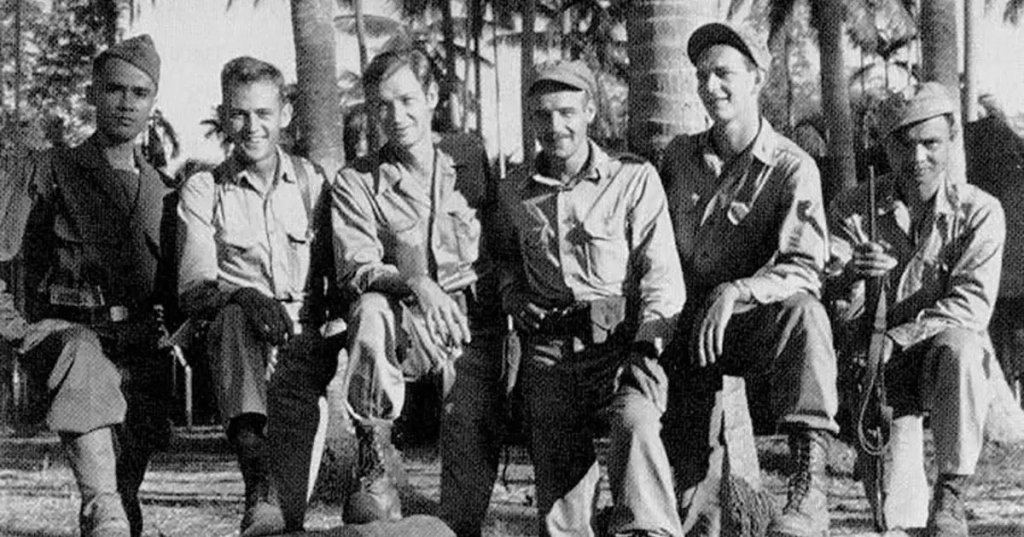Staff Sgt. Ray C. Hunt was a mechanic in the Army Air Corps when the Japanese surprise attack across the Pacific on Dec. 7, 1941, dragged him into World War II. He was soon captured, escaped the Bataan Death March that killed thousands, and then led guerrilla forces against the Japanese for the rest of the war.
Hunt is one of history’s true reluctant heroes. He joined the Army Air Corps in 1939 partially to avoid duty in the infantry if the war in Europe eventually swept up the United States. He rose to the rank of staff sergeant as a mechanic and was an expert in the Curtiss P-40 Warhawk fighter.

When the Japanese attacked at Pearl Harbor on Dec. 7, Hunt’s base in the Philippines was hit just a few hours later. Because Hunt was west of the International Date Line, his base experienced the attack in the early hours of December 8.
The mechanic and other members of his unit were in the field sleeping in foxholes when the attack began, but still suffered losses as bombs and rounds from aircraft pelted their positions. For troops in the Philippines, that wasn’t the end of the attack. The Imperial Japanese followed up air attacks with amphibious landings and invasion.
America defaulted to its old War Plan Orange in the Philippines which called for a fierce defense of Bataan Peninsula. Hunt and others created a hidden airfield in the jungle and recovered their planes which flew missions against Japan. But the defense was doomed from the start by a lack of true combat troops and the decision not to reinforce the defenders.

The Japanese launched a Death March to move captured Americans to prison camps, and many U.S. service members died in the forced march so brutal that its organizer was executed for war crimes. Luckily, Hunt and a few others were able to escape the march alive.
In the jungle, Hunt recruited a small group of fighters and began operating under Lt. Robert Lapham, another American turned Filipino guerrilla leader. As the war ground on, the resistance in the Philippines spent most of its time gathering intelligence and moving constantly, though they did launch harassing attacks when possible.
Hunt was promoted to captain by the guerrillas and given command of a large group of fighters which eventually grew to 3,400. Their finest hour came in the five days before the American invasion of Luzon when they launched a massive campaign to prepare the island for American landings in what was called “Operations Plan 12.” The guerrillas received their orders on Jan. 4, 1945.

The American relayed the order to begin operations to the other company commanders and then took his men on an assault against a Japanese encampment. While the overzealous guerrillas launched such a slapdash attack that Hunt called it a “Marx Brothers battle,” it managed to cause extensive damage and kill some of the Japanese defenders.
The best part for the guerrillas was that when the Japanese troops found their bullet casings dated 1942 and 1943, they assumed that they had been attacked by paratroopers and so began to focus on the possibility of constant attacks, degrading their morale and readiness.
Hunt and his men spent the following days collecting intelligence and harassing the Japanese as they withdrew to defensive positions. When the invasion came on Jan. 9, they were ordered to stay in their position. This put them in the perfect place to attack Japanese forces falling back east from the main American attackers in the west.

Hunt’s men would later be credited with 3,000 kills in those crucial five days preceding the invasion.
The American leadership accepted Hunt’s promotion to captain and ordered him to rejoin American forces. He went on horseback with 15 of his fighters to the headquarters and briefed other officers on the disposition of guerrilla and Japanese forces, often accidentally speaking in Filipino dialects because he was no longer used to speaking English.
Hunt voluntarily remained in the Philippines for a few more months to support the American invasion and was personally pinned with a Distinguished Service Cross by Gen. Douglas MacArthur who thanked Hunt and others for remaining in the Philippines and serving American interests for three years.
(Author’s note: A lot of the information for this article comes from Capt. Ray C. Hunt’s memoirs, “Behind Japanese Lines: An American Guerrilla in the Philippines,” a well-written and often funny account of his wartime exploits.)


